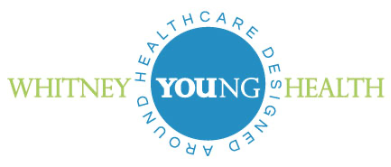
On the last Myth Busters, National Nutrition Month edition, we have Molly Ward, RD, CDN, CDE, Whitney Young Health’s Registered Dietitian and Certified Diabetes Educator busting the myth that all calories are created equal and what foods contain “good” calories.
Foods that provide important nutrients such as protein, unsaturated fat, fiber, vitamins and minerals are termed nutrient dense because they are density packed with nutrition the body needs. Conversely, foods that lack such important nutrients but contain added sugar, salt and solid fat are termed empty calorie foods or junk foods as they provide a lot of calories without much nutrition.
Examples of nutrient dense foods are:
-
Vegetables
-
Fruits
-
Nuts
-
Seeds
-
Fish
-
Lean Poultry
-
Whole Grains
Examples of empty calorie foods are:
-
Candy
-
Ice Cream
-
Baked Goods
-
Sugary Cereal
-
Pop-Tarts
-
Soda
-
Sport Drinks
A diet that limits empty calories and includes a variety of nutrient dense foods promotes health and wellness, whereas a diet low in nutrient density promotes obesity and obesity related diseases. So it is important to care about the type of calories you choose!
Another upside to choosing healthier foods is that you get to eat more food. Why? Most nutrient dense foods are lower in calories than empty calorie food, by equal weight, which means you can eat more and consume equal or less calories. This is helpful if you want to lose weight but struggle with hunger, excessive snacking and or overeating. Those that eat more nutrient dense foods tend to consume fewer calories and also tend to have healthier weights. Don’t we all want to be told what we can eat more of? Here is your answer, eat more veggies, fruits, whole grains, nuts, seeds and fish.
Hopefully after reading this article you will think about other aspects of food other than calories.
Whitney Young Health is dedicated to helping at-risk people of all ages get on a healthier lifestyle track by providing nutrition counseling. If you would like to schedule an appointment to meet with Molly, please call 518-465-4771.
—
References
- Flegal, K. M., Kit, B. K., Orpana, H., & Graubard, B. I. (2013). Association of all-cause mortality with overweight and obesity using standard body mass index categories: a systematic review and meta-analysis. JAMA, 309(1), 71–82. https://doi-org.uws.idm.oclc.org/10.1001/jama.2012.113905
- Grotto, D., & Zied, E. (2010). The standard american diet and its relationship to the health status of americans. Nutrition in Clinical Practice, 25(6), 603-612. doi:10.1177/0884533610386234
- Lock, K., Pomerleau, J., Causer, L., Altmann, D. R., & McKee, M. (2005). The global burden of disease attributable to low consumption of fruit and vegetables: implications for the global strategy on diet. Bulletin Of The World Health Organization, 83(2), 100–108. Retrieved from https://uws.idm.oclc.org/login?url=http://search.ebscohost.com/login.aspx?direct=true&db=mdc&AN=15744402&site=eds-live&scope=site
- Raynor, H. A., & Champagne, C. M. (2016). From the Academy: Position of the Academy of Nutrition and Dietetics: Interventions for the Treatment of Overweight and Obesity in Adults. Journal of the Academy of Nutrition and Dietetics, 116, 129–147. https://doi-org.uws.idm.oclc.org/10.1016/j.jand.2015.10.031
